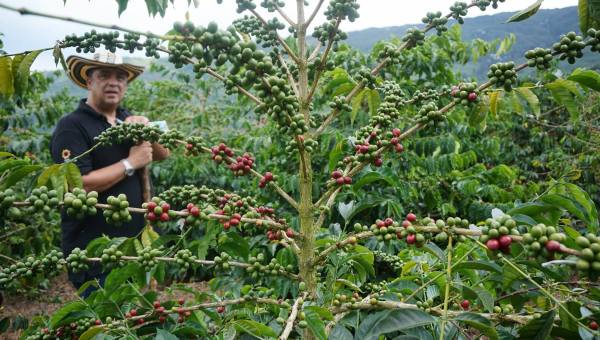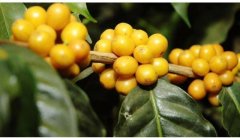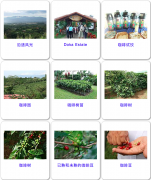Costa Rican Honey treatment of Coffee beans introduction of three major coffee producing areas in Costa Rica

For professional baristas, please follow the coffee workshop (Wechat official account cafe_style)
Costa Rican honey treatment
Sweet flower fragrance
Costa Rica Honey Process
If you like coffee that is as light and sweet as tea, with a slightly floral, lemon and nutty flavor like melon, honey beans from Costa Rica in Central America may be to your taste. The so-called honey treatment, refers to the first use of a pulper to remove the outer skin of coffee cherry fruit, and then will take? Pectin raw beans with shells are placed on the scaffolding for sun exposure. This water-saving treatment can make the coffee taste sweeter.
Located in the fertile central valley of Costa Rica (Central Valley), the Zamora estate in San Isidro (San Isidro de Heredia) is the winner of the 2012 Costa Rican C.O.E Coffee Competition. The farm is owned by the Rodr guez Carballo family, who have been producing coffee since 1880. This coffee has a complex taste, with floral aromas and juicy fruit flavors, and the taste is very clean.
Costa Rica Costa Rica
Population: 4586000
In the past Costa Rica has successfully sold its coffee according to the name of the region where it is produced. However, tastes vary from region to region, so it is well worth exploring each different region to see what kind of coffee beans they can produce.
CENTRAL VALLEY
The Central Valley, the capital of Costa Rica, San Jose, is located here, which is the most densely populated area. It is also an area that has been growing coffee for the longest time. It is usually divided into subregions of San Jos é Heredia and Alajuela. There are three major volcanoes in the region: lrazu,Barva and Boaz affect topography and soil.
Altitude: 900-1600m
Harvest: November-March
WEST VALLEY
West Valley, the first farmer to settle down in the 19th century, brought coffee. The region is divided into six subregions around the urban centres of San Ramon, Palmares, Naranjo, Greece, Sarchi and Artenas. There is a specific coffee variety in Sarchi called Villa Sarchi. The highest elevation in the area is around Naranjo, and some amazing coffee can be found at the altitude of the area.
Altitude: 700-1600m
Harvest: October-February
TARRAZU
The Tarrazu producing area has a long-standing reputation guarantee, and for many years, the coffee from here can almost be regarded as a high-quality grade. But the coffee comes from different farms and is then mixed into large batches. However, over the years, Tarrazu's brand has accumulated sufficient strength, and coffee produced from outside the region is also marked with Tarrazu to increase its value. Costa Rica's tallest coffee farm is located in this area, like many other areas, where profits are made during the obvious dry season harvest.
Altitude: 1200-1900m
Harvest: November-March
Important Notice :
前街咖啡 FrontStreet Coffee has moved to new addredd:
FrontStreet Coffee Address: 315,Donghua East Road,GuangZhou
Tel:020 38364473
- Prev

The aroma of single Brazilian coffee blends with the highest grade Santos NO2 of Brazilian Santos coffee
Professional baristas please pay attention to the coffee workshop (Wechat official account cafe_style) Brazil accounts for 30% of the global coffee production, coffee is mainly produced in the southeast, mostly exported through the port of santos, hence the name Brazilian Santos coffee beans. The aroma of Brazilian coffee is very harmonious, neutral and delicate, with aromas of dried jujube, cinnamon and nutmeg.
- Next

Visit Costa Rican Coffee Manor Costa Rica Coffee beans from planting to picking and packing
Professional barista communication please follow the coffee workshop (Wechat official account cafe_style) Volcn Pos (Boas volcano) is located in the middle of Costa Rica (Costa Rica), about 33 kilometers from the capital, is an active volcano, 2708 meters above sea level, a total of 39 eruptions since 1828. I joined a Volcn Pos one-day tour at a hotel in the capital.
Related
- Detailed explanation of Jadeite planting Land in Panamanian Jadeite Manor introduction to the grading system of Jadeite competitive bidding, Red bid, Green bid and Rose Summer
- Story of Coffee planting in Brenka region of Costa Rica Stonehenge Manor anaerobic heavy honey treatment of flavor mouth
- What's on the barrel of Blue Mountain Coffee beans?
- Can American coffee also pull flowers? How to use hot American style to pull out a good-looking pattern?
- Can you make a cold extract with coffee beans? What is the right proportion for cold-extracted coffee formula?
- Indonesian PWN Gold Mandrine Coffee Origin Features Flavor How to Chong? Mandolin coffee is American.
- A brief introduction to the flavor characteristics of Brazilian yellow bourbon coffee beans
- What is the effect of different water quality on the flavor of cold-extracted coffee? What kind of water is best for brewing coffee?
- Why do you think of Rose Summer whenever you mention Panamanian coffee?
- Introduction to the characteristics of authentic blue mountain coffee bean producing areas? What is the CIB Coffee Authority in Jamaica?

